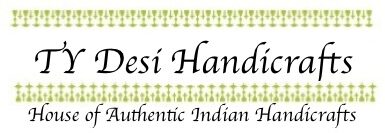- You have no items in your shopping cart
- Subtotal: $0.00
Dhokra Art – The Eternal Metal Craft
From the heart of West Bengal comes an art so eternal, it is cast in the absoluteness of metal. An ancient method of making metal artifacts, Dhokra art goes back 5000 years. It is believed the legendary dancing girl of Mohenjo-Daro is the earliest known ‘Dhokra lost wax casting’ artifact. Dhokra Damar tribes are the main traditional metal-smiths of West Bengal and Odisha. Their technique is named after their tribe, hence Dhokra metal casting. Though this art form originated in the Indian states of West Bengal & Odisha, it has spread to neighboring states like Madhya Pradesh, Uttar Pradesh, Bihar, Jharkhand, and Chhattisgarh.
Dhokra art is an ancient bell metal craft creating metal figurines from bronze and copper-based alloys using a lost wax casting technique. This craft combines the wax technique with metallurgical skills to create artifacts of distinctive beauty. Dhokra art is labor-intensive as it takes a minimum of 4-5 days to make a simple piece of work. The complicated designs could take up to 2-3 weeks. Dhokra metal objects are comprised of slender and elongated figurines, including folk lamps and household articles like measuring bowls and lamps.
The uniqueness of these artifacts is that the final product has a different texture depending on the wax strips and they don’t have any joints. Since the artifacts are completely handcrafted, no two Dhokra pieces look the same.
The process of making Dhokra art
The first step in creating the metal artifact is by creating the mold in clay. It starts by mixing anthill mud and cow dung in the correct ratio. A pure form of clay is applied to get a smooth layer. After the mold dries, wax threads are wound all around to acquire the chosen design. Another layer of clay mixed with sand is applied and dried on top of that by making two channels.
Once the clay model is completely dried, a mixture of sand with a minimal quantity of clay is applied and the process is continued by baking the clay-wax model in the furnace. Molten metal is poured into the funnel-like opening once the mold is taken out of the furnace.
The mold is then allowed to cool down completely by dipping in water, slightly hammered to remove the burnt mold, and brushed thoroughly to clean it inside and out. The final product is prepared by filing through the imperfections in the metal.
Evolution of Dhokra art
Most Dhokra artifacts are human or animal figurines. The tribes are known for making measuring bowls, religious deities, and lamps. The themes are quite limited due to the metalsmith’s limited exposure beyond their private lives. Dhokra art has evolved and combined with other art forms and is used to make jewelry boxes, tableware, wall clock, wall decors, and more.

